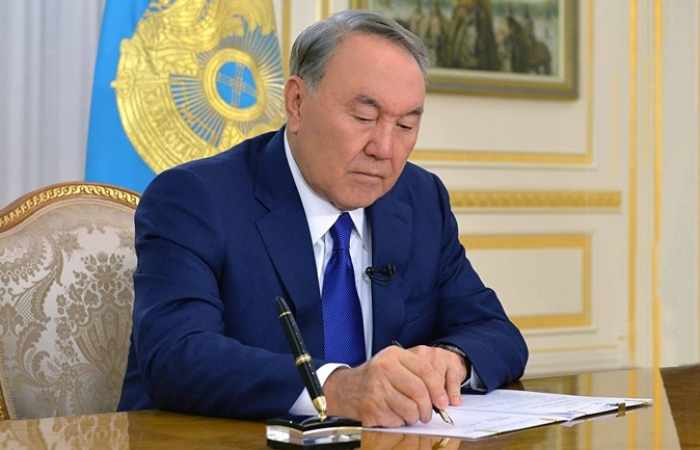Work is already under way and a timetable for the transition will be ready by the end of the year, he said. That is the timetable being set for experts and the public to agree on a unified standard alphabet.
From 2018, education specialists will be tasked with compiling new textbooks for middle school.
Nazarbayev has advanced the latinization agenda before, but his article indicates a fresh urgency. In December 2012, the changeover of alphabet was included as part of the Kazakhstan-2020 national strategy.
In his piece, Nazarbayev argued that younger people would find no trouble adapting to a new alphabet, since they all now study English. During the adaptation period to the new alphabet, Cyrillic will be used all the same.
The president described the transition as an embrace of pragmatism and he said it was necessary to pursue the path of modernization.
“The state or the nation should not be like rigid metal, they should be living organisms capable of constantly evolving. You need to be able to change to keep up with life. Anybody that fails to understand this will always lag behind,” he wrote.
Although Nazarbayev speaks of the change in alphabet in terms of modernization, there is a transparent political agenda at play here. To put it in crude terms, the Russian world writes in Cyrillic, but the Turkic cultural sphere writes in Latin letters.
Kazakhstan actually switched to the Latin alphabet in Soviet times, but not for long.
With the establishment of the Soviet Union, a clamor emerged — both at the grassroots and among policymakers — for the new state’s Muslim populations to ditch Arabic script, which was deemed representative of a retrograde and superstitious culture and, in any case, poorly suited to the needs of Turkic languages. Anatoly Lunacharsky, the first Soviet People's Commissar of Education, even dabbled in an article penned in 1930 with the idea of Russian adopting Latin script.
The result of Soviet reforms was a Unified Turkic Alphabet that was gradually rolled out through the union in the 1930s. Progress was hampered, however, by the technical difficulty in introducing the necessary printing facilities.
According to official estimates, by the time Latinization was fully implemented, around 1936, some 68 nationalities, accounting for a total of 25 million people, were familiar with the new writing.
In the professed interests of promoting greater communication and harmony between the peoples of the union, however, a move toward Cyrillic was initiated by the end of the 1930s, and that is what the former Soviet nations of Central Asia inherited.
Following the fall of the Soviet Union, Azerbaijan has made the most successful reversal to Latin, followed by Turkmenistan, although progress in the latter is hard to truly evaluate in view of the country’s closed nature. Uzbekistan long ago adopted legislation committing the nation to the move, but the process has been fraught in practice.
Latinization has been a recurrent theme for Kazakh intelligentsia since the 1990s, although it was decided in the early days that such a move would stand to harm the interests of the broader population by causing de facto illiteracy at the stroke of a pen. (That complaint was regularly made in Turkmenistan, where the change of alphabet was implemented with the barest of consultation with the public).
The issue divides the population to this day.
The so-called national-patriots favor the switch as a boon to putting a distance between Kazakh and Russian. The Russian-speaking population, meanwhile, perceive the idea as a threat to their cultural legacy, although it should be noted that Nazarbayev’s proposals concern only Kazakh and not Russian.
/Eurasianet/
More about: #Kazakhstan
















































